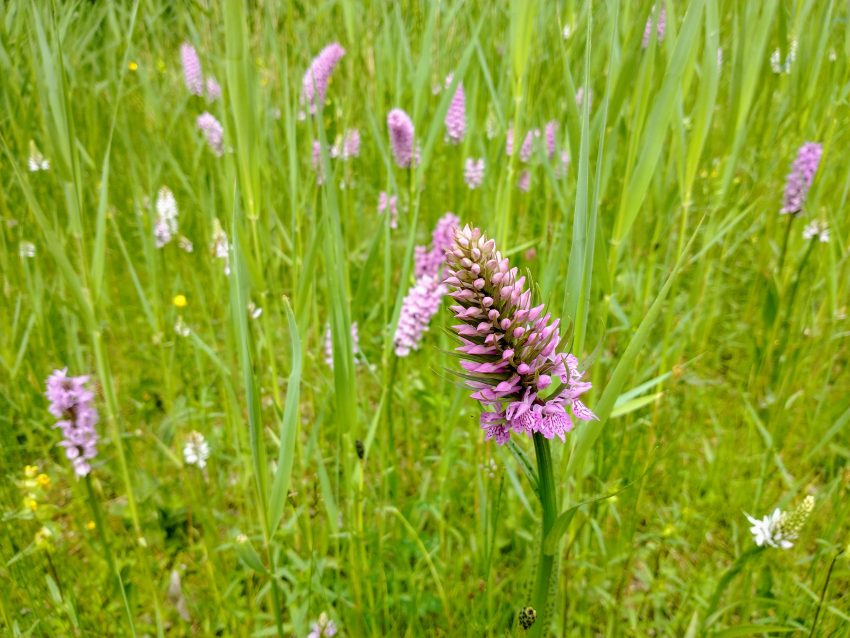Dactylorhiza are tricky
These beautiful British wildflowers like to hybridise, which makes them tricky to identify. They are often pale pink to purple with darker markings on their petals. Their leaves often have transverse markings (a pattern that goes across the leaf rather than along it).
Heath spotted orchid – Dactylorhiza maculata
This beautiful pale lavender pink orchid I photographed recently was growing in a sunny but marshy area in June in Kent and had spotted leaves. I think it is a Heath spotted orchid – Dactylorhiza maculata, because BSBI identified Heath spotted orchid Dactylorhiza maculata in Clowes Wood. It can be differentiated from Common spotted orchid Dactylorhiza fuchsii by the less strongly divided lower petal lobes.
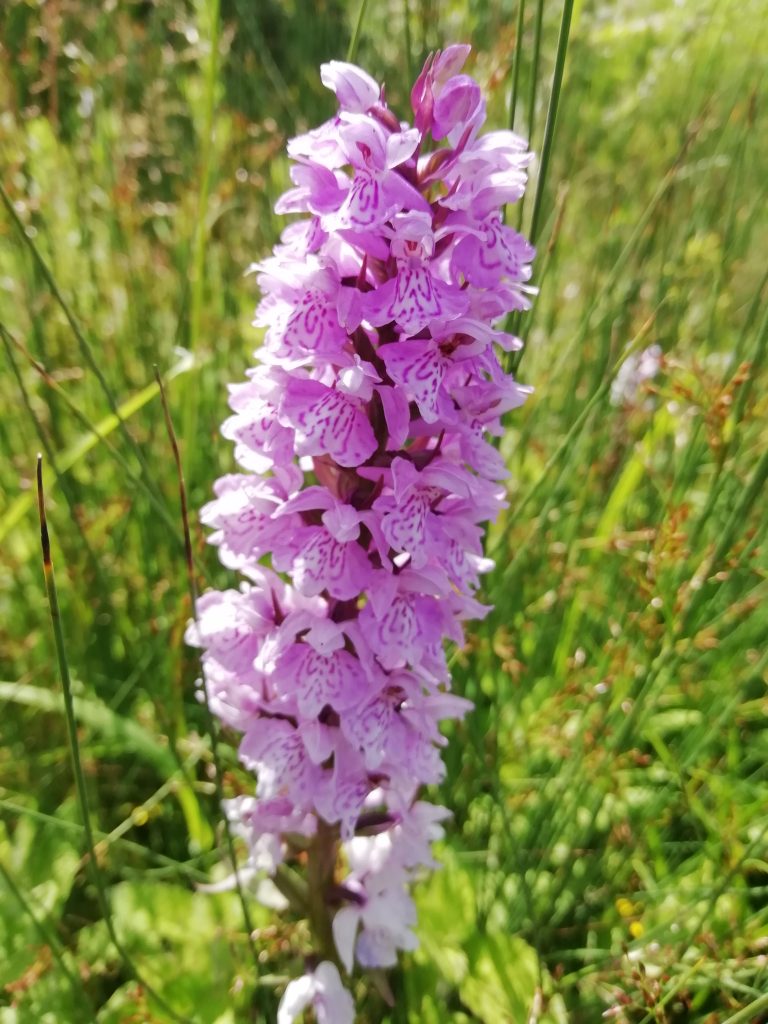
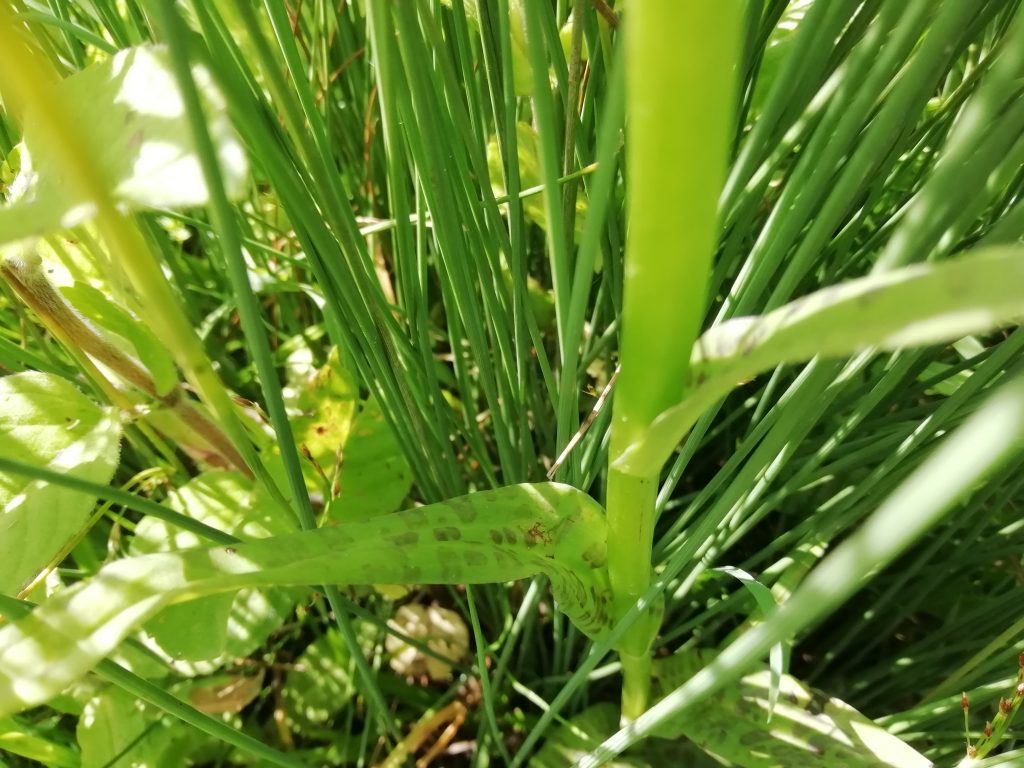
Common spotted orchid – Dactylorhiza fuchsii
You can see in the pic below that the Common spotted orchid flower is similar to Heath spotted orchid but the lower lip on each flower is more strongly lobed. Both are pale pink with darker markings on the flowers and leaves. Habitats preferred by Common spotted orchid include chalk grassland.
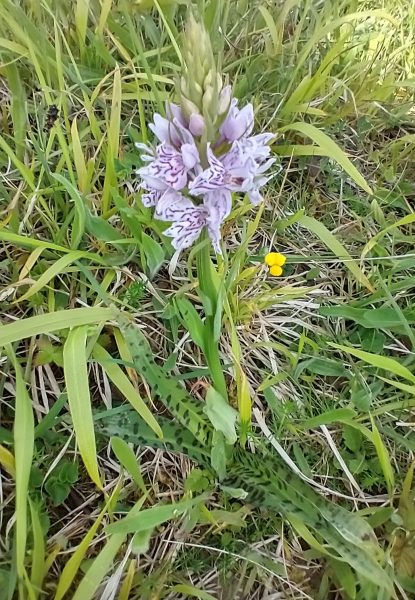
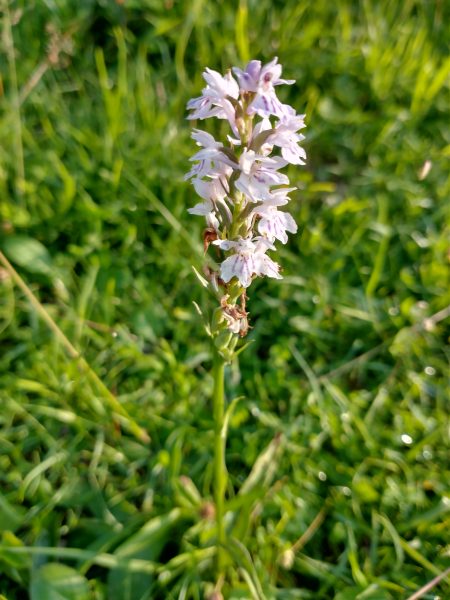
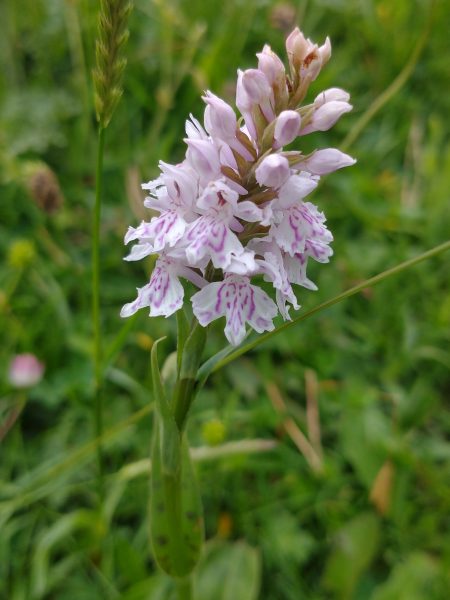
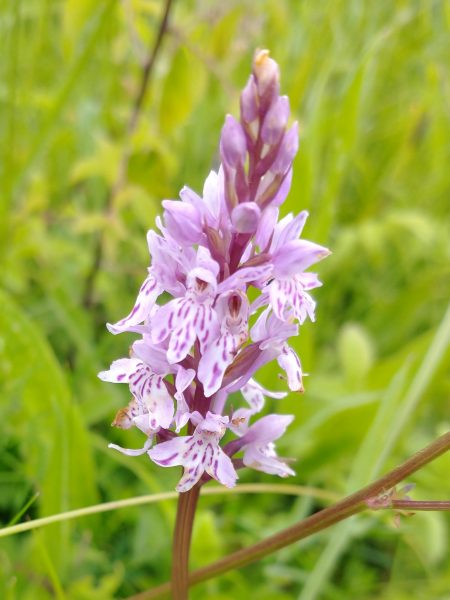
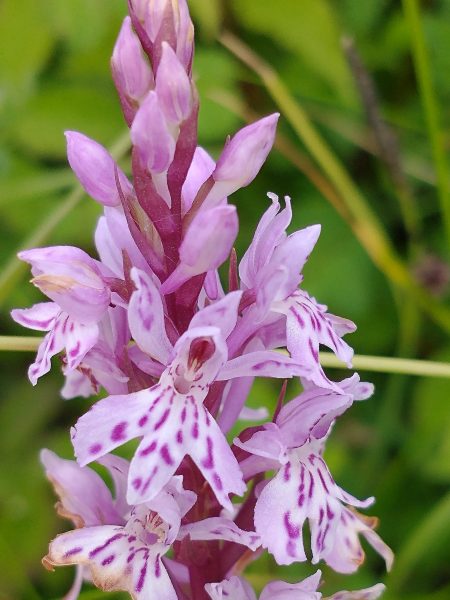
Southern marsh orchids – Dactylorhiza praetermissa
The photo in the main image on this page is also Dactylorhiza, and I did read that Southern marsh orchids, Dactylorhiza praetermissa are to be found at Kirkby Moor nature reserve in Lincolnshire where this was photographed.
Read more about Marsh and Spotted orchids
Blog posts mentioning Marsh and spotted orchids – Dactylorhiza are tagged Dactylorhiza
https://photographingwildflowers.co.uk/tag/dactylorhiza/
In 2021 I found Common spotted orchids at Grin Low SSSI in Derbyshire, on Seaford Head and in Cradle Valley Seaford.
2021 was a particularly good year for orchids in my neck of the woods!
More about Orchids in general

